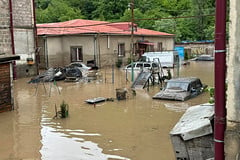
A group of German universities, funded by one of the European Union's foundations, is creating innovative electric transport for rural areas, reports Monocab.
In Germany, most suburban rail routes have long been out of service, though the tracks remain, albeit in a neglected state. The idea involves creating monorail taxi carriages that can accommodate 4-6 people, allowing the carriages to move freely in both directions on a single track.
Prototypes are being tested without gyroscopes. According to sources, Germany has seen a decline in both the supply and demand for suburban passenger transport. Residents there prefer using personal vehicles, which concerns authorities who advocate for environmental protection.
The deployment of rail service on demand in the form of electric mini-carriages as monorail transport aligns with the move away from fossil fuels and will maintain convenience for people who no longer have to wait for a rare train or stray suburban bus.
The concept of gyroscopic-stabilized monorail carriages was first proposed and implemented over a hundred years ago by engineer Louis Brennan.
The Monocab project, developed by the OWL University of Applied Sciences and Technology, Bielefeld University of Applied Sciences, and the Fraunhofer IOSB-INA institute, is not as large-scale but is innovative in essence.
Modern technologies allow for the creation of compact electric carriages equipped with gyroscopes and electronics that can automatically navigate predetermined routes.
The European Union fund began financing the project in 2022. To date, prototypes of the carriages have been created, which still rely on a second rail without a self-balancing system.
These monorail carriages are expected to be operational by 2028. To prevent the carriages from accumulating at the end of the line, engineers are designing a track machine that will automatically transfer them from one rail to another, preparing them for the return journey.






















